Search results for: Mckinsey 7s
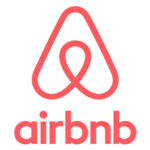
People-to-people platform of Airbnb benefits all its stakeholders, including hosts, guests, employees and the communities in which it operates. According to its CEO, Airbnb is “a more vertically integrated, end-to-end, full-stack ecosystem powered by people.”[1] Generally, Airbnb ecosystem can be divided into two groups: narrow and broad. Narrow Airbnb ecosystem comprises services that directly generate revenues for Airbnb, while broad ecosystem contributes to the development of peer-to-peer lodging, travel and experiences industry in general. Airbnb ecosystem in a narrow level integrates the following types of services: Accommodation Experiences Adventures Restaurants The travel industry disruptor supports stakeholders in its narrow ecosystem in various manners. For example, in a rare event of accidental damage, the property of every Airbnb host is covered up to a million dollars.[2] Airbnb has caused an ecosystem of new start-ups that produce products and services for peer-to-peer lodging industry. This can be specified as broad Airbnb ecosystem and includes a range of products and services. Table below illustrates the most popular types of such services referring to notable examples: Products and services within Airbnb ecosystems Notable examples Cleaning services of properties FlyCleaners: On-Demand Dry-Cleaning App Proply: Full-service cleaning, key delivery, welcome gifts and restocking Porter: laundry, cleaning, restocking Property management for hosts Guesty: responding to guest inquiries, screening potential guests, coordinating key exchange etc. Urban Bellshop: check-in, listing management, cleaning Nest: controlling temperature, Analytics Beyond Pricing: automated pricing suggestions Smart Host: pricing advice Everbooked: pricing suggestions based on a wide range of factors Services within broad Airbnb ecosystem Additional products and services within Airbnb broader ecosystem include automating check-in process, providing keyless entry around the clock, concierge services and welcoming guests and software products such as data presentation and analytics. Moreover, physical products such as toiletries, remote locks, and noise signallers and financing services for Airbnb hosts…
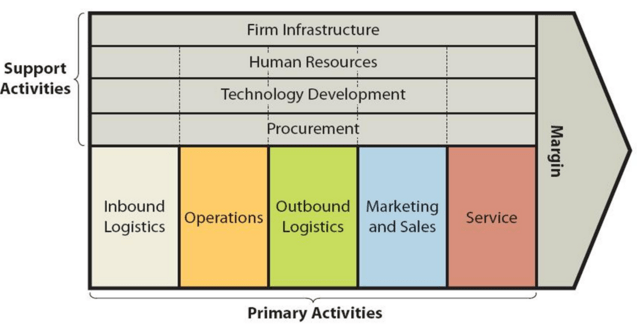
Airbnb value chain analysis is an analytical framework that assists in identifying business activities that can create value and competitive advantage to the global rental and experiences platform. Figure below illustrates the essence of Airbnb value chain analysis. Airbnb Value Chain Analysis Primary Activities in Airbnb Value Chain Analysis Airbnb Inbound logistics In traditional businesses inbound logistics involve receiving and storing raw materials to be used to manufacture products. Inbound logistics is different in service industry in general and online service in particular due to differences between products and services that include inseparability, intangibility, perishability and heterogeneity. From this perspective, Airbnb inbound logistics can be divided into two groups: 1. Inbound logistics related to core services. Core services for the company comprise peer-to-peer listings of accommodation, experiences and adventures. Airbnb inbound logistics for its core services takes a few minutes thanks to purely online nature of its business. Specifically, hosts can list their properties or experience services on the website of the lodging colossus on a matter of a few minutes. Therefore, inbound logistics of each new addition to its website comes for no extra cost for Airbnb. 2. Inbound logistics of resources and items that are used to aid the facilitation of core services. The global hospitality service brokerage company also uses a range of physical resources such as stationary items for its offices. Moreover, products like pillows and mugs, distributed to hosts occasionally to motivate them can also be mentioned as resources acquired by the travel industry disruptor to aid the facilitation of core services. Economies of scale can be specified as the main source of value addition in Airbnb inbound logistics of items that aid in facilitation of core services. Airbnb Operations Generally, operations involve the transformation of raw materials into finished products in manufacturing…
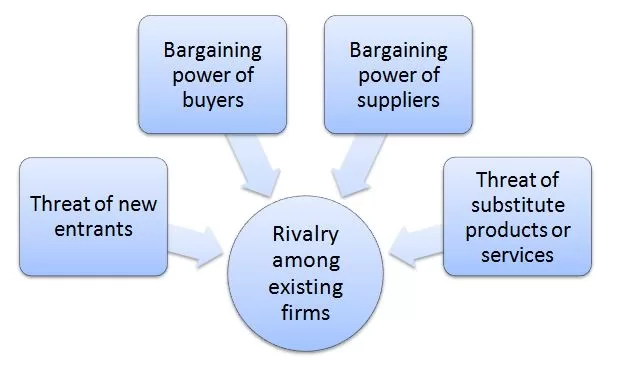
Porter’s Five Forces analytical framework developed by Michael Porter (1979)[1] represents five individual forces that shape an overall extent of competition in the industry. Airbnb Porter’s Five Forces Analysis are illustrated in Figure 1 below: Figure 1 Airbnb Porter’s Five Forces 1. Threat of new entrants in Airbnb Porter’s Five Forces Analysis The threat of new entrants into pear-to-pear lodging industry is low. Theoretically, setting up a website should suffice to enter the industry. However, in practice there is a number of barriers to potential new entrants into peer-to-peer lodging industry. These include the following: 1. The time of entry. In e-commerce the role of the first mover advantage is usually paramount and it is usually very difficult if at all possible for the followers to even get close to the market disruptor. Once their business model proved to be viable, internet-based market disruptors such as Amazon, Facebook and Uber were able to gain large market share in the global marketplace in a short amount of time. Funding from investors, word-of-mouth, effective management and hype usually play an instrumental role in assisting e-commerce disruptors to secure their niche and strengthen their position in international markets. This was the case with Airbnb as well. Founded in 2008, the company became a leading global hospitality service brokerage company within a matter of a few years. As of summer 2019, Airbnb boasts More than 6 million listings in more than 191 countries and regions worldwide.[2] The word Airbnb became a synonym for peer-to-peer lodging, leaving little room and market for potential new entrants. Nevertheless, it would be naive to claim that the threat of new entrants does not exist. There is no limit on the numbers of times that a market can be disrupted and as such, any new company with another innovative idea…
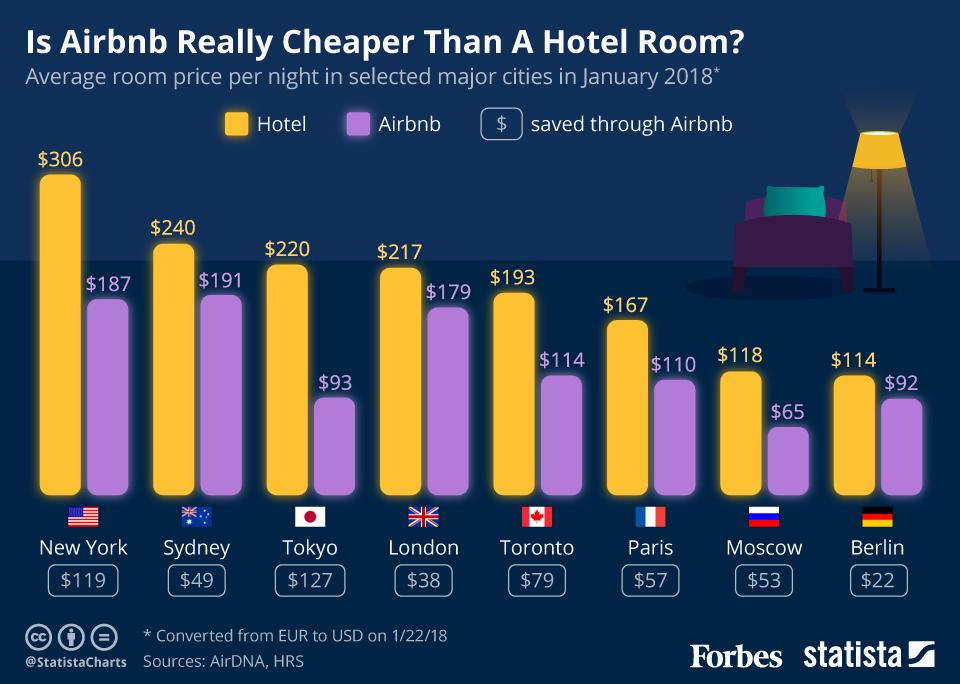
SWOT is an acronym for strengths, weaknesses, opportunities and threats related to organizations. The following table illustrates Airbnb SWOT analysis: Strengths 1. First mover advantages 2. Cost attractiveness for customers 3. Impressive growth rate 4. Airbnb adventures Weaknesses 1. Inability to control service quality 2. Vulnerability of brand image 3. Replicable business model 4. Absence of reception, housekeeping and room service Opportunities 1. Brand extension 2. Further international market expansion 3. Further technological integration 4. Formation of new strategic alliances Threats 1. More legal issues 2. Scandals 3. Emergence of new competition 4. Loss of key members of workforce Airbnb SWOT analysis Strengths in Airbnb SWOT Analysis 1. Airbnb has a first mover advantage in peer-to-peer lodging industry. First mover advantage has played an instrumental role for Airbnb in terms of establishing strong brand recognition and achieving private brand valuation at USD 35 billion.[1] Thanks to first mover advantage coupled by effective leadership by founders Brian Chesky, Joe Gebbia and Nathan Blecharczyk, the word Airbnb has become synonym for peer-to-peer lodging practices. Moreover, it can be argued that first mover advantage immensely contributes to Airbnb brand loyalty by rapidly expanding its customer base. 2. Airbnb is more cost attractive compared to traditional hotels and this is one of the major strengths points of its customer value proposition. As it has been illustrated in figure below, as of January 2018 average room prices per night are considerably lower at Airbnb compared to average room prices of hotels and this difference is the biggest in New York at USD 119. Operating rooms via Airbnb does not require 24 hours check-in desk, concierge, administration office and management apparatus like hotels, therefore at Airbnb a part of the cost advantage is passed to consumers. Average room prices in selected major cities in January 2018[2]…
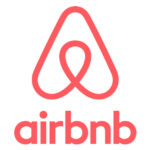
Airbnb marketing communication mix as a framework explains how the global lodging company uses individual elements of marketing communication mix. Elements of marketing communication mix according to this framework consist of print and media advertising, sales promotion, events and experiences, public relations, direct marketing and personal selling. The patterns of use of these elements by Airbnb is explained below. Airbnb Print and Media Advertising Despite the purely online nature of its business model, Airbnb uses print and media advertising extensively. The accommodation and experience marketplace launched Airbnb Magazine in May 2017 distributed in the U.S., with the exception of a small number of copies that will be available for sale in London priced at USD 3,99.[1] Airbnb magazine is a highly dynamic print media platform that responds to the interests of the company’s target customer segment. It has been noted that if Airbnb “algorithms see that users are increasingly searching for ‘Paris’, it notifies the magazine’s editorial staff to whip up a story or two on the French capital.”[2] It has also been speculated that the global hospitality service brokerage company has plans to create its own TV shows in order to encourage people to travel more. As a starting point “Airbnb has reportedly worked on a TV show called Home for Apple’s new TV Plus subscription service; the show focuses on unearthing unique living spaces around the world and the people who reside there”[3] Although Airbnb did not use celebrity endorsements up to date, the global rental and experiences platform effectively uses the use of its services by celebrities as a part of its marketing strategy. For example, the lodging company promotes luxury mansions and villas where celebrities such as Arianna Grande, Lady Gaga, Britney Spears and Channing Tatum have stayed using Airbnb. Viral marketing is also used by Airbnb…
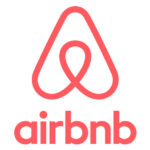
Airbnb segmentation, targeting and positioning consists of a set of consequent activities that divide customers into different groups and identify specific groups to be targeted. The accommodation and experience marketplace positions its services in a way that best appeals to the needs and wants of members of this group. Airbnb uses the following types of positioning: 1. Multi-segment positioning. The global lodging company uses multi-segment type of positioning targeting more than one segment with different service packages. For example, the company lists cost-effective apartments for rent for cost-conscious customer segment, whereas Airbnb Plus package targets customers who value advanced quality and design and are willing to pay more. Recently, the platform launched its Airbnb Luxe line of premium apartments that has been positioned as ‘extraordinary homes with five-star everything’ targeting premium customer segment. 2. Anticipatory positioning. Airbnb uses anticipatory positioning, launching services for a market segment that has low turnover with the anticipation that the turnover will increase in the future. Adventures services such as ‘Around the World in 80 Days’ and experiences of “Becoming a Beekeeper” can me mentioned as examples of Airbnb services with anticipatory positioning. The following table illustrates Airbnb segmentation, targeting and positioning: Type of segmentation Segmentation criteria Airbnb target customer segment Accommodation Experiences & Adventures Geographic Region More than 191 countries and regions and about 100000 cities More than 30000 experiences worldwide Density Urban/rural Urban Demographic Age 18-45 18-60 Gender 54% Females & 46% Males[1] Males & Females Life-cycle stage Bachelor Stage Newly Married Couples Full Nest I Full Nest II Full Nest III Empty Nest I Empty Nest II Bachelor Stage Newly Married Couples Full Nest I Full Nest II Empty Nest I Occupation Students, employees, professionals, Students, employees, professionals, senior manager, executives Behavioral Degree of loyalty ‘Hard core…
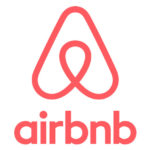
The concept of marketing mix (also known as 7Ps of marketing) comprises elements of the marketing mix that consists of product, place, price, promotion, process, people and physical evidence. Airbnb marketing mix (Airbnb 7Ps of marketing) below involves the analysis of these elements for the global hospitality service brokerage company. Product Element in Airbnb Marketing Mix Airbnb can be used to find places to stay and various tourism experiences around the globe. It is important to note that Airbnb does not own places or does not host the experiences it offers. It is only a platform between service providers and consumers. The global hospitality service brokerage company has been increasing the range of its services regularly. Started only as s website that can be used to find bed and breakfast type of accommodation in 2008, today Airbnb offers a wide range of hospitality services. These include places to stay for various tastes, purposes and budgets, concerts, adventures, experiences and restaurants. Place Element in Airbnb Marketing Mix There are more than 191 countries and regions and about 100000 cities with Airbnb listings[1]. Airbnb offices are located in 34 cities worldwide.[2] The listings of the accommodation and experience marketplace are not concentrated in any single market. Less than 3% of all active listings are in New York City, London, and Paris. No one city accounts for more than 1% of our listings worldwide.[3] Price Element in Airbnb Marketing Mix Airbnb pricing strategy can be described as economy pricing. Airbnb is widely recognized as the most affordable option of finding an accommodation. The global lodging company charges hosts only 3% booking fee and guests are also charged a service fee (which Airbnb collects directly), and it may collect a VAT (value-added tax) in some jurisdictions. Guests usually have access to common facilities such as their…
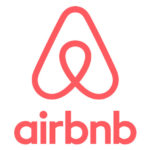
Airbnb brand proposition is rooted in travel, communities, people and experiences and this proposition is placed at the core of Airbnb marketing strategy. Moreover, Airbnb marketing strategy is based on the following three principles: 1. Successful brand partnerships. The travel company has engaged in a number of mutually beneficial partnerships with other brands in order to achieve global brand exposure and create a buzz on the social media. The list of successful Airbnb partnerships include KLM Royal Dutch Airlines, UK bookstore chain Waterstones and even the French government.[1] 2. Celebrity endorsement and social influencers. The peer-to-peer lodging company has been quick to leverage the use of its services by celebrities. The list of celebrities who contributed to spread the word about Airbnb include Mariah Carey, Grande, Lady Gaga, Britney Spears, Channing Tatum and others. The company has been also effective in initiating publicity stands to attract the attention of social media influencers such as journalists, bloggers, YouTubers, podcasters and Instagram stars. For example, Airbnb has sailed a full-size floating size along the Thames River in 2015 to celebrate new rules to support home sharing in London.[2] This particular campaign generated hundreds of press coverage in the UK with positive implications on the level of Airbnb brand awareness. 3. Developing and strengthening the community. From early on, the global hospitality service brokerage company focused on developing its community consisting of both types of customers – hosts, as well as, guests. Airbnb encourages regular communication, detailed profiles and strong reviews in the community. Airbnb Inc. Report contains a full analysis of Airbnb marketing strategy. The report illustrates the application of the major analytical strategic frameworks in business studies such as SWOT, PESTEL, Porter’s Five Forces, Value Chain analysis, Ansoff Matrix and McKinsey 7S Model on Airbnb. Moreover, the report contains analyses of…
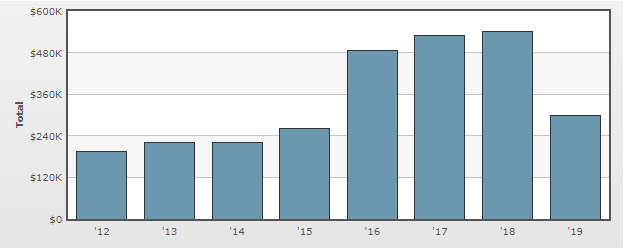
Airbnb PESTEL stands for political, economic, social, technological, environmental and legal factors effecting the peer-to-peer lodging company. It is an important analytic tool used to analyse external factors affecting businesses for strategy development. Political Factors in Airbnb PESTEL Analysis There are some political factors at the local and global scales that affect Airbnb revenues in direct and indirect manners. Issues with governments over the taxes and opposition from local governments and residents are the most important political factors for the peer-to-peer lodging company. Issues with governments over the taxes In the US, there is a dispute between a number of local governments and Airbnb over the allocation of responsibility to collect and pay occupancy taxes. A number of local and foreign governments have criticised Airbnb for not paying housing and/or other relevant taxes and they have been trying to take action with varying levels of success. It has been noted that in the US, “from Nashville to New Orleans to Honolulu, Airbnb is battling local officials over requests to collect occupancy taxes and ensure that the properties listed on its site comply with zoning and safety rules.”[1] The company lobbies its interest hiring firms such as KDCR Partners and Fulcrum Public Affairs in attempt to decrease government oppositions to the business. As illustrated in figure below, Airbnb annual lobbying budget is not massive though, compared to other multinational companies and in 2018 it amounted to USD 540,000.00. Annual Lobbying by Airbnb Opposition from local governments and residents Airbnb has faced opposition from local governments and protests from local residents due to perceived negative impact of the global hospitality service brokerage company to neighbourhoods. One of the major points of concerns in local communities relates to negative impact of the travel industry disruptor on local housing prices. There…
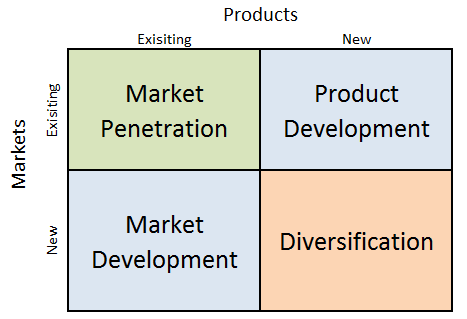
Airbnb Ansoff Matrix is a marketing planning model that helps the global hospitality service brokerage company to determine its product and market strategy. Ansoff Matrix illustrates four different strategy options available for companies. These consist of market penetration, product development, market development and diversification. Airbnb Ansoff Matrix Within the scope of Ansoff Matrix, Airbnb uses all four growth strategies in an integrated manner: 1. Market penetration. Market penetration involves the sales of existing products to existing markets. The accommodation and experience marketplace uses market penetration strategy extensively. Airbnb marketing strategy and exceptional customer services play instrumental role in engaging in market penetration by Airbnb. 2. Product development. This strategy is associated with developing new products to sell to existing markets. Product development is one of the main growth strategies for the global rental and experiences platform. Specifically, starting only as a short-term accommodation provider in 2008, Airbnb consequently increased its service portfolio to include experiences, adventures and restaurants services. 3. Market development. Market development strategy refers to finding new markets for existing products. The global rental and experiences platform aggressively engages in market development. Airbnb started its operations in San Francisco, California and today it has more than 6 million listings in more than 191 countries and regions worldwide.[1] Moreover, there are about 100000 cities with Airbnb listings.[2] 4. Diversification. Diversification can be explained as developing new products to sell to new markets. The global lodging company has engaged in diversification business strategy a number of times. Entering the industry as cost-effective accommodation provider for cost-conscious travellers, Airbnb has diversified the business to also serve premium market segment with respective offerings such as villas, mansions and even castles. Airbnb Inc. Report contains a full analysis of Airbnb Ansoff Matrix. The report illustrates the application of the major analytical strategic frameworks…
